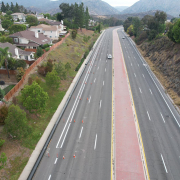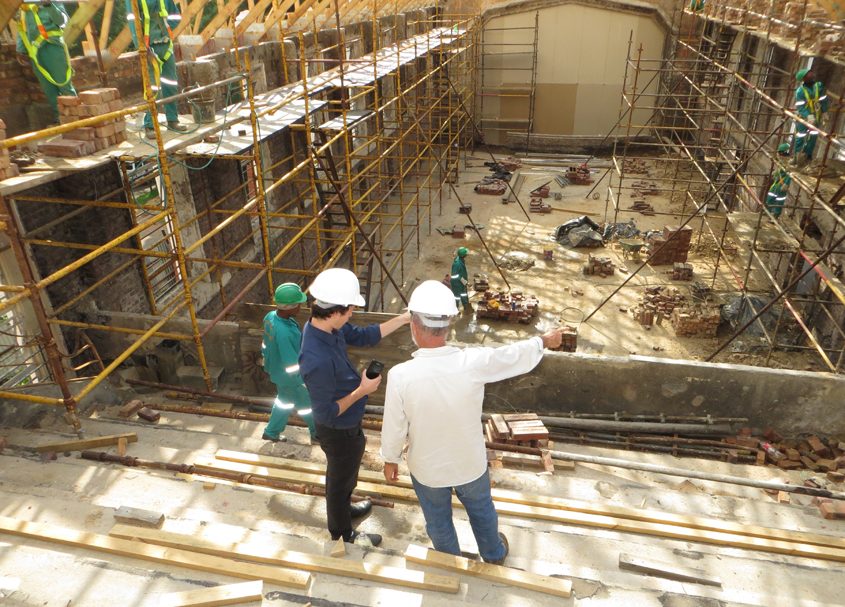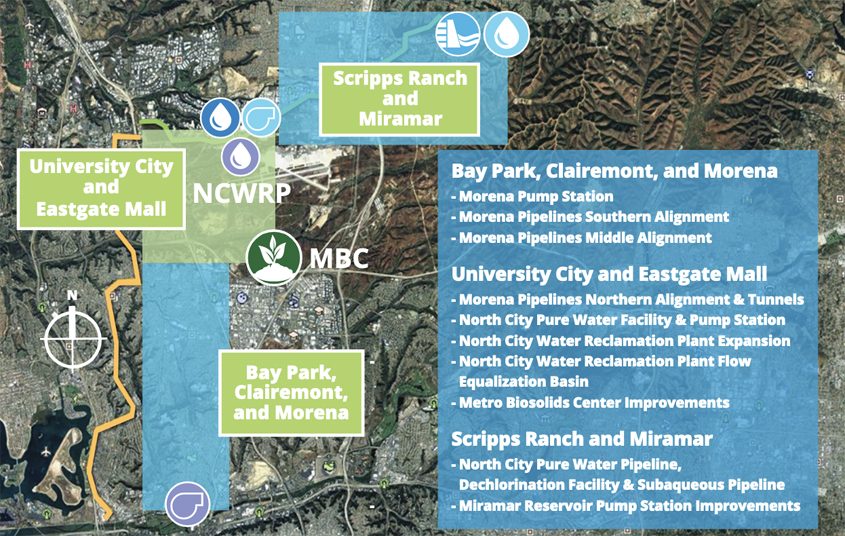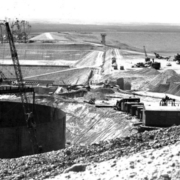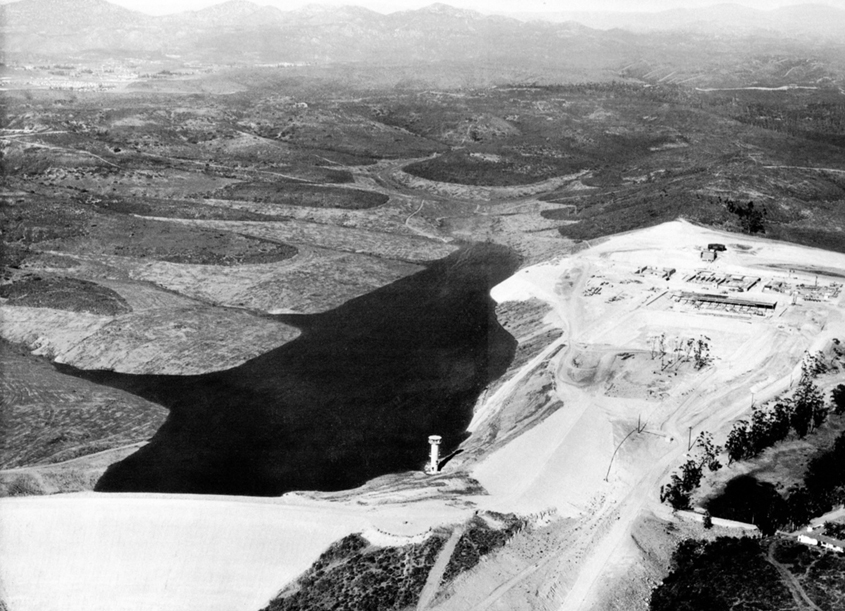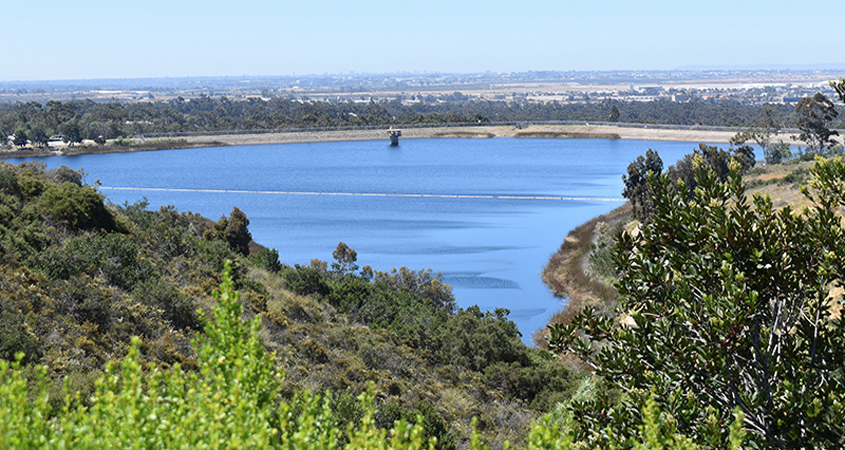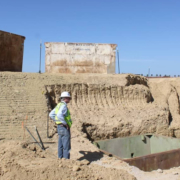Construction Heats Up This Summer On East County AWP
Summer 2025 marks the third year of construction on the East County Advanced Water Purification Program facilities in Santee.
Progress on the East County Advanced Water Purification Program (East County AWP) continues on schedule at multiple East County locations, with significant steps forward reached as the project works its way toward completion.
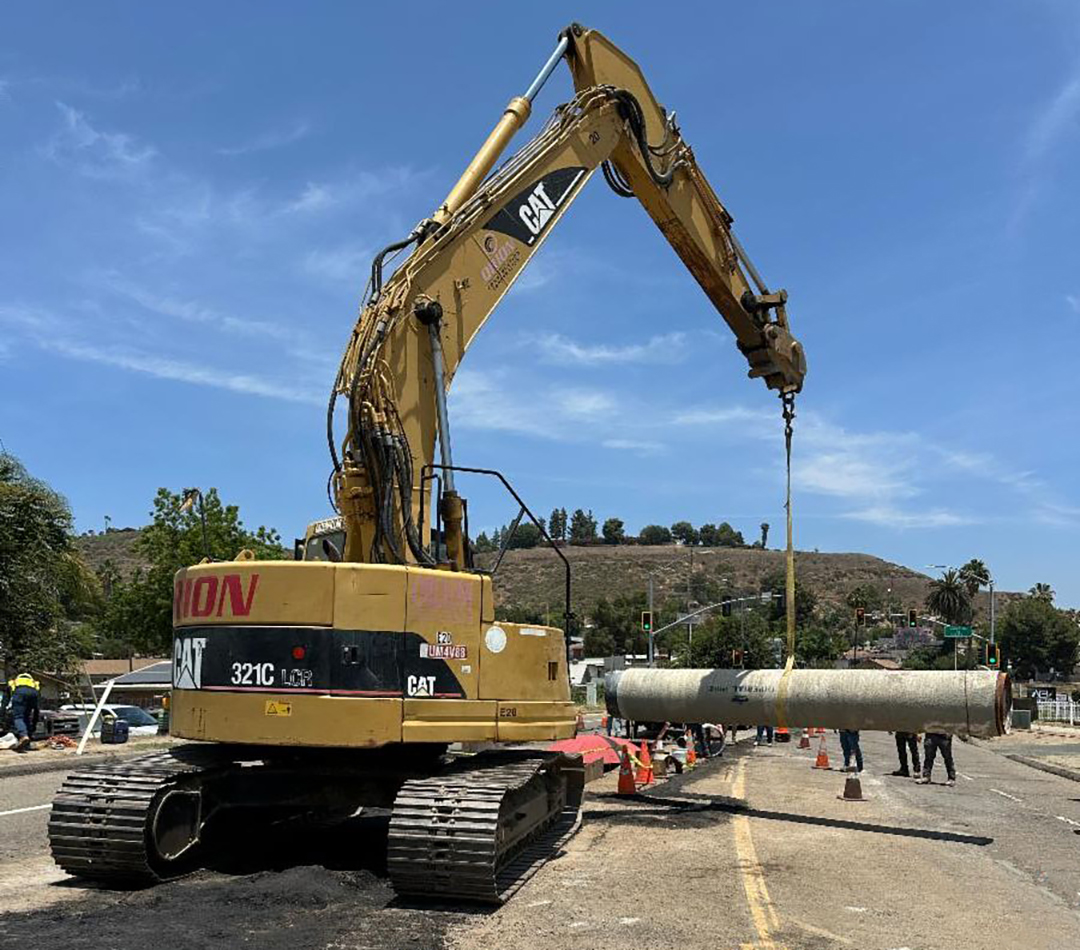
The last piece of purified water pipeline was installed at Riverside Drive and Valle Vista Road in Lakeside. Photo: East County AWP
A major project milestone was reached in June. Purified water pipeline construction is officially complete. The final 20-foot piece of the pipeline was installed in Lakeside last month.
Since construction began in 2022, just over 51,000 linear feet of purified water pipeline has been installed. This 10-mile pipeline will transport purified water from the East County AWP Facility in Santee to Lake Jennings. Restoration and roadway paving is wrapping up this portion of the project
See a brief video update on the East County AWP progress here.
Mission Trails Regional Park Closures
Visitors to Mission Trails Regional Park may have seen the installation of a project bypass pipeline along the Father Junipero Serra Trail. This bypass pipeline serves to protect Mission Trails Regional Park against sewer spills once construction is underway to rehabilitate a sewer pipeline and install a new residuals pipeline.
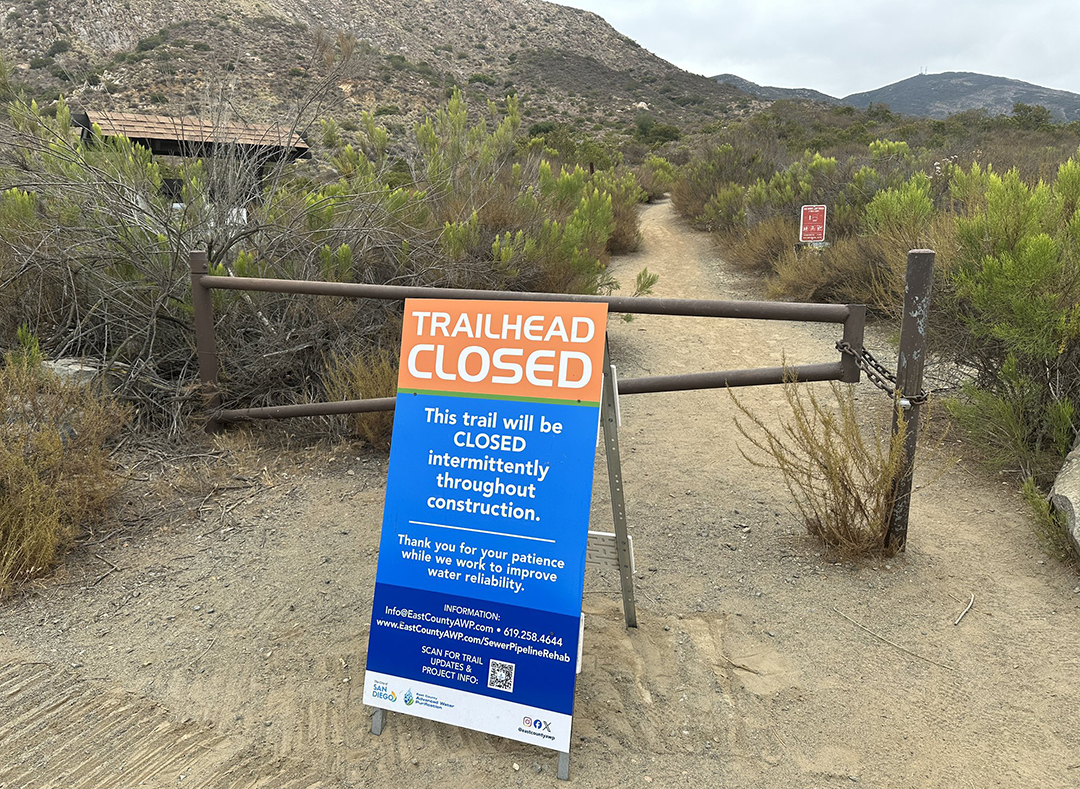
Temporary closure of trailheads in Mission Trails Regional Park will take place through summer 2028. Photo: East County AWP
The 28-inch bypass pipeline is being installed along the entire 2.6 mile stretch of the trail with crews working east to west, fusing the pipeline sections together and undergrounding it when they reach intersections and trailheads.
The project requires the temporary closure of trailheads for up to two to three-day periods from 7 a.m. to 3:30 p.m.
It has also resulted in a long-term closure of the Father Junipero Serra Trail to all vehicles from the gate near the Visitor Center to the Old Mission Dam parking lot. This closure will last through summer 2028. The trail will remain open to pedestrians and bicyclists.
Overnight Work Underway At Santee Lakes
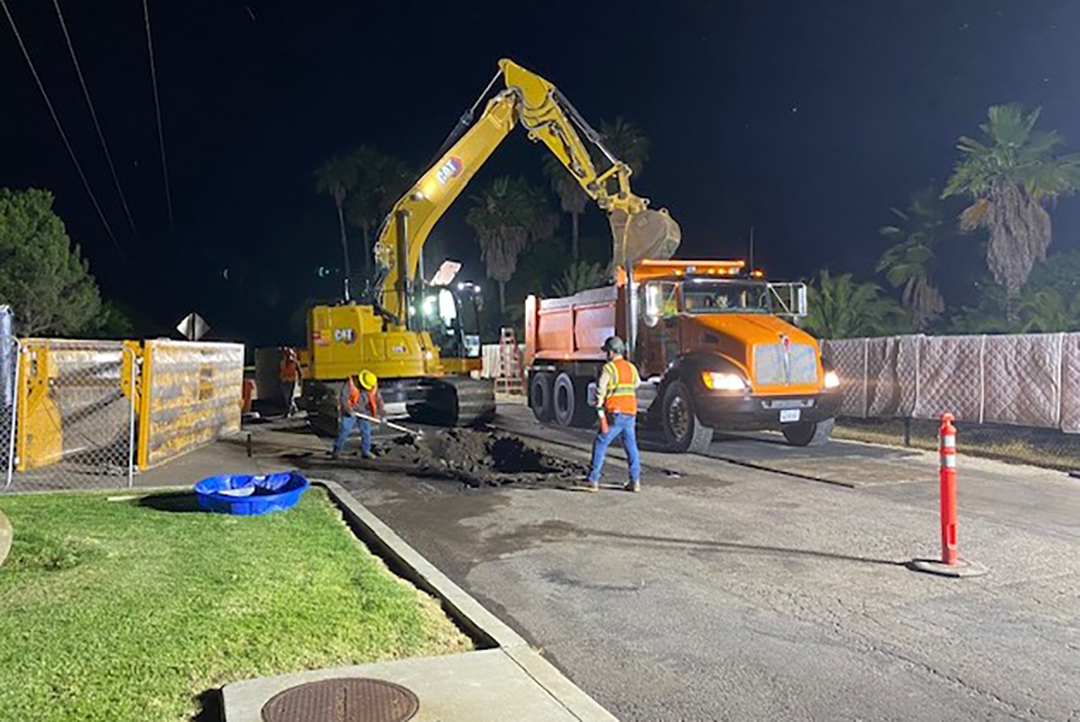
Overnight work is underway at Santee Lakes for the East County AWP. Photo: East County AWP
Overnight work on the east side of Santee Lakes is now underway. Crews are working at various locations on the east road from the roundabout near the park entrance on Fanita Parkway up to the East County Advanced Water Treatment Facility, just north of the lakes.
A 20-inch sludge line is being installed using a trenchless construction method called sliplining which may result in noise and bright lights for nearby neighbors. This overnight work is expected to be completed by the end of November 2025.
Work will take place during the following days and hours:
Monday night to Thursday morning from 7 pm. to 6 a.m.
Thursday night to Saturday morning from 7 p.m. to 5:30 a.m.
West Side of Santee Lakes Reopens For Summer

The west side of Santee Lakes is now reopened for recreation. Photo: East County AWP
Great news for Santee Lakes visitors. The west road where wastewater and brine pipelines were being installed has been reopened. Pedestrians, bicyclists and cars are able to use the roadway following the completion of this pipeline work, marking another project milestone.
Interactive Map Keeps Residents Updated On Progress
When completed, water from this project will provide potable water to customers in Padre Dam Municipal Water District, Helix Water District, and Lakeside Water District service areas, and the northern portion of the Otay Water District.
With construction in multiple locations throughout east county, the Program’s interactive map offers a useful tool for residents and businesses to track where work is happening. The map is updated regularly and accessible 24/7 through the EastCountyAWP.com website. Information is also available via social media at @eastcountyawp

